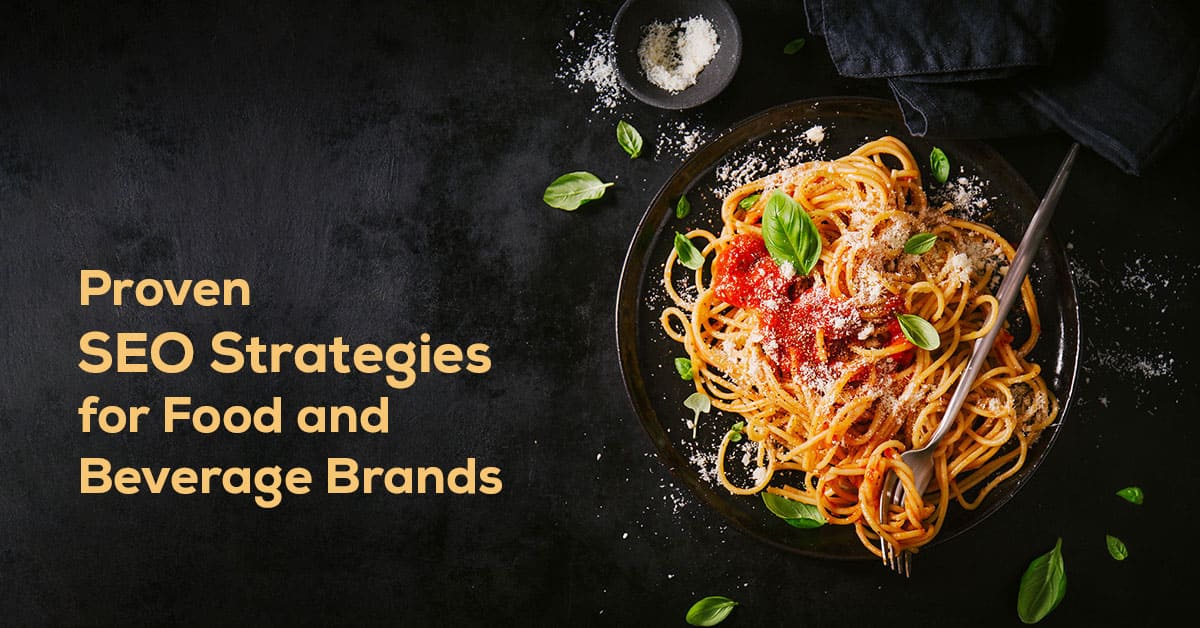Posted At: Aug 03, 2024 - 494 Views

Search engines play a major role by using algorithms to rank a website against other websites using parameters like the age of the site, its structure, and the quality of the content. Studies show that organic traffic is responsible for 53% of all web traffic. This means, that the majority of customers, irrespective of brand awareness, will enter through a search engine results page. Importantly, organic has an average conversion rate of 2.35%, which is second to paid search. The rapid growth in the food and beverage market has prompted us to draw a strategy to help the brands make the most of their SEO plan. In this article, let us look at five simple, workable, and effective points for the food and beverages industry.
1) Keyword: SEO operates on keywords and keywords determine when the site appears in the search results. It is very important to choose a keyword specific to a particular brand and the industry. The keywords can be:
- Branded Words: This will help to tank for their own company and product name.
- Non-Branded Words, especially for product categories like ‘natural juice’, ‘homely food’ This would get discovered by a reasonable number of shoppers
- Words indicating the store location will be helpful as this will prompt while searching “Where to buy”
- “Ways to use” words are another way to promote. This will work well in the case of a blog with different types of recipes using the brand, like “super chef’s specialities with the brand”.
- Projecting the nutritional values available in the product and/or the ingredients used to prepare the product will help to achieve good results.
Also, long-tail keywords (containing 3 or more words) are a better option than short-tail keywords (containing one or two words). Ensure to use the keywords only where they make sense and do not overuse them. This is to avoid keyword stuffing, which will negatively impact the ranking. Selected keywords can be integrated into numerous places on the site, such as in title tags, headings, meta descriptions, the body text of web pages, etc. Google crawls the website to understand the context of WebPages.
2) Backlinks: are the links to the brand’s site from other credible sites. Earning them is very important. When a credible site links to a brand’s content, it signals to Google that the site is valid and trustworthy. Google will intern increase the food/beverage brand’s SEO ranking and more credible leads may reach the brand. The food and beverage brand can earn backlinks through partnerships. In such a scenario, the partners include a mention of the brand or use the brand’s content as a resource on their page or in their social media platforms along with the backlink. The partners can be influencers, authorities, charitable organizations, event organizers, and business associates. The partnership usually works in a mutually benefited manner and exchanges product samples, freebies, sponsorship to charitable or food and beverage-related events, business deals, etc.
3) Interlink: It is also important to interlink the food and beverage brand’s pages within their website. This will increase the traffic to the website and the duration of the engagement. This will prompt Google to consider the brand’s webpage to be valuable and boost the rank to enable more leads. Interlinking will also help to sign up for emails, download content, or convert.
4)Optimizing images on the website of food and beverage brands is another advantage. The brand’s website ideally has at least one image per page. The images can be of products, teams, partner logos, and stock images. The images are to be named and sized appropriately and have an optimal alt text format.
5)Content creation is another way to increase the SEO ranking since content draws invaluable traffic and keeps this traffic engaged on your page. The content is brand and industry-specific and can be in the form of blogging, videos, infographics, e-books, etc. The point of content is to provide the audience with valuable information. This will not only boost the confidence of the visitor in the brand but also help in conversion.








